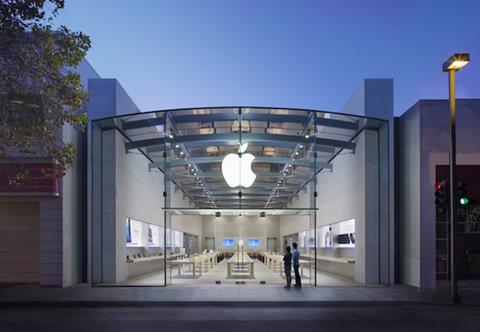
Technology organisation Apple has reported a 5% mean gender pay gap for fixed hourly pay as at 5 April 2017.
The organisation has reported its gender pay gap data across three UK legal entities in line with the government’s gender pay gap reporting regulations and in time for the private sector submission deadline of 4 April 2018 (today). The legal entities Apple has reported on include Apple UK, Apple Europe and Apple Retail.
The gender pay gap reporting regulations require organisations with 250 or more employees to publish the difference between both the mean and median hourly rate of pay for male and female full-time employees; the difference between both the mean bonus pay and median bonus pay for male and female employees; the proportions of male and female employees who were awarded bonus pay; and the proportions of male and female full-time employees in the lower, lower middle, upper middle and upper quartile pay bands.
Apple’s median gender pay gap for fixed hourly pay as at 5 April 2017 is 2% in favour of women.
Its mean gender pay gap for bonuses paid in the year to 5 April 2017 is 22%, and the median gender pay gap for bonus payments is 12%. Over this period, 88% of female employees received a bonus payment compared to 92% of male employees. All Apple employees are eligible to receive bonuses, however because the gender pay gap reporting requirements only considers vested stock in the year to 5 April 2017, new employees hired in this period were not represented in the final data.
Less than a third (29%) of employees in the highest pay quartile at Apple are female, compared to 29% in the second quartile, 25% in the third quartile and 32% in the lowest pay quartile. Apple’s workforce comprises of 30% female staff and 70% male staff.
Apple attributes its gender pay gap to the smaller proportion of female staff employed at the organisation overall, and the fact that more men are employed in higher-paid leadership positions. These roles also attract higher bonuses and stock options, which consequentially affects the organisation’s bonus gender pay gap too.
Over the past three years, Apple has increased its female representation from 28% in 2014 to 30% in 2017, with 36% of the organisation’s new employees in 2017 being female. In addition, 33% of its employees under the age of 30 are women and 40% of Apple’s leaders who are under 30-years-old are female; this reflects a 12-percentage point increase over two years.
To address its gender pay gap, Apple is working to attract more diverse talent for jobs at all levels, delivering inclusive leadership training to all UK managers and the organisation’s new Women’s Leadership programme is being expanded to help more female managers develop their careers.
The organisation is also increasing its mentoring programmes, providing maternity leave training for managers and is driving succession planning to develop a pipeline of female talent through all levels of the business. Apple is also promoting its employee forums, which work to expand career growth opportunities and provide support to employees to help them manage their work-life balance.
Deirdre O’Brien, vice president, people at Apple, said in the report: “We know the strength of our innovation depends on a vibrant and diverse workforce. From our earliest days, we’ve believed that Apple should be a reflection of the world around us. That’s why we’re deeply committed to increasing the number of women, of all races and ethnicities, who work, grow and thrive at Apple in dozens of professional fields and at all levels.
“Apple believes strongly that equal work deserves equal pay. Every year, we examine the compensation employees receive and make adjustments where necessary to ensure we maintain pay equity. And we have achieved this in every country; women at our [organisation] earn the same as men when you factor in similar roles, markets and performance. As part of our commitment to eliminating pay disparities from the first day at Apple, later this year we’ll also stop asking candidates about their salary history.
“We believe people come to Apple to do their life’s best work. It’s the diversity of our employees and their ideas that inspires the innovation that runs through everything we do. We’re determined to continue our progress towards a workforce that’s more representative of the world around us. It’s part of our commitment to leaving the world better than we found it.”











